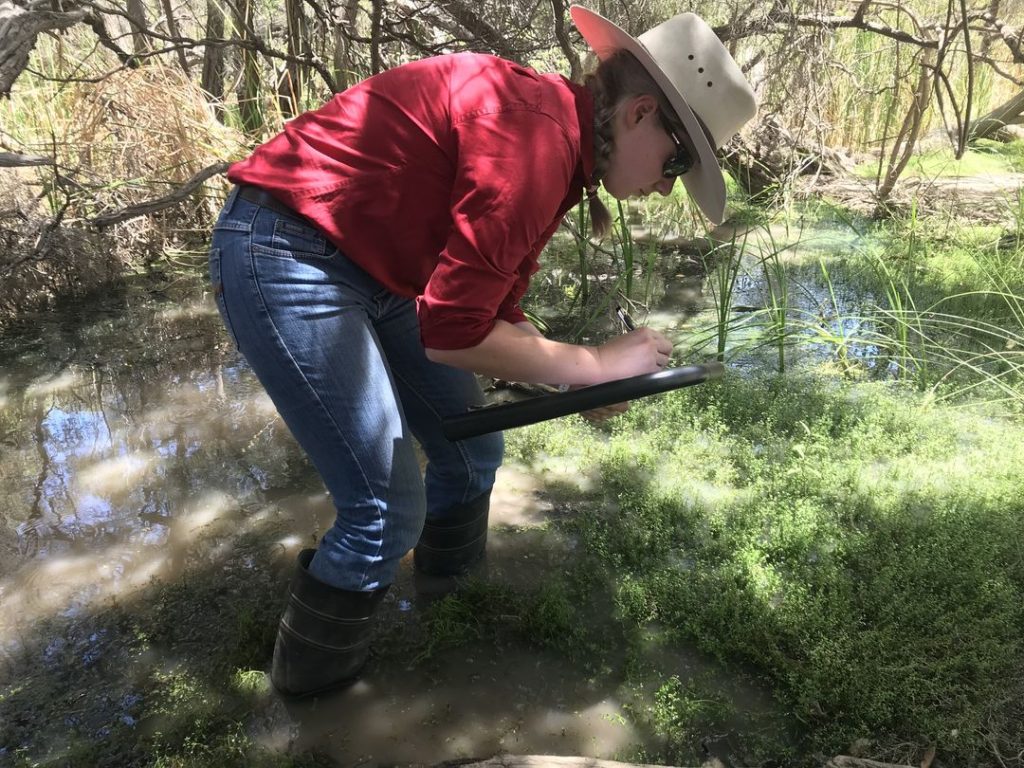More wildlife, biodiversity detected at emerging springs
Our focus at this time of the year (Feb-March) is assessing outcomes that come with good rainfall.
And with plenty of revisits to our monitoring sites across the Desert Channels region, you’ll be sure to see plenty of DCQ vehicles around!
This year, widespread rain and regular follow-up rainfall means changes to our emerging springs are happening very quickly.

DCQ Officer Natalie Pearce conducts spring monitoring in the Desert Channels region.
At one of our main spring recovery sites, we now have over 72 per cent of Rubber Vine removed thanks to the hard work of our DCQ Field Team and landholders.
More water, more springs
Thanks to DCQ’s recent watertightening and bore capping project, we have also recorded the re-emergence of dozens of new springs across properties in the Great Artesian Basin.
We have now recorded 109 species at spring sites, including four “conservation-listed” species and two species that are undergoing further study to confirm whether they are yet to be described.
In addition to this, new records have been submitted to expand the “known range” of certain species in the Desert Channels region.
Exciting stuff – and a great outcome that again demonstrates that conservation and primary livestock production can co-exist effectively.

